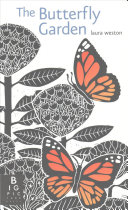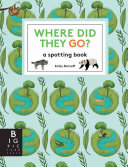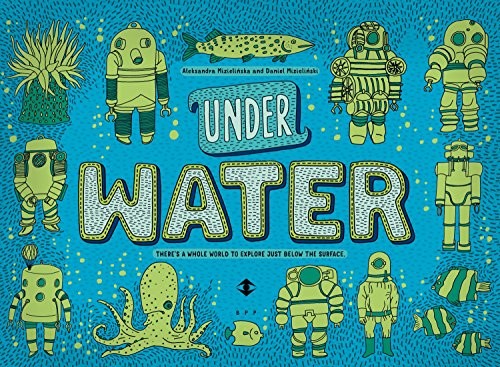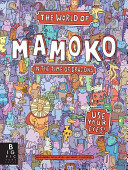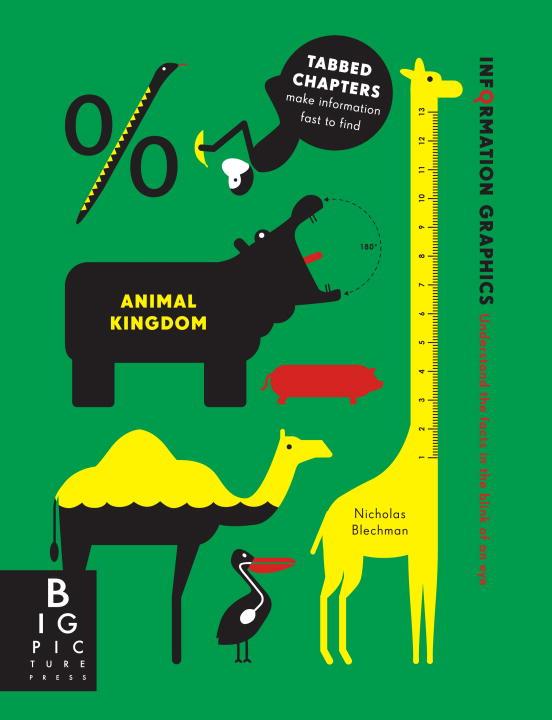Candlewick/Big Picture
22 Reviews
(3)
K-3
With vibrant mixed-media illustrations and playful interactive text, this book presents thirteen different animal species and their unusual collective names: "a conspiracy of lemurs," "a flamboyance of flamingos," etc. Animals are pictured in various poses and described by loosely rhyming verse while additional questions ("Who's sleepy?"; "Who's waving?") encourage readers to linger and examine each colorful spread. Further information on the animals is appended.
Reviewer: Erica Wetter
(3)
4-6
Amazing illustrations created entirely with pressed plants are the centerpiece of this nature guide covering the four seasons. Each image reflects an accompanying paragraph on various topics including nest building, deer rutting, and hibernation. Ahpornsiri's book provides a more advanced nature study, so this is ideally suited for upper-elementary-age readers. Appreciation of the art may inspire kids to try their own pressings. Glos.
Reviewer: Janet Dawson
(3)
K-3
Inspired by Jules Verne's novel, a small, bespectacled boy takes a fantastic journey through forty spreads with eighty challenges, including mazes, difference spotting, and other calls for mental contortion. The generous trim size contains the multitudes of balloons, bicycles, etc., depicted in pen-and-ink with spare digital coloring, elegantly hiding solutions in plain sight. Answer keys are appended.
Reviewer: Dorrie Karlin
(3)
4-6
Welcome to the Museum series.
Illustrated by
Chris Wormell.
This oversize volume begins with explanations of classification and the age of the dinosaurs, then presents an imagined museum tour through six "galleries," each featuring a clade or group. Wormell's digital engravings capture textures beautifully--including the scales, skins, and feathers of dinosaurs and the lush foliage of their habitats--and are accompanied by detailed field guide–like notes on each feature or species. Ind.
Reviewer: Danielle J. Ford
(3)
4-6
Illustrated by
Eleanor Taylor.
Separated into five sections by ocean layer, the large square volume showcases a variety of unusual creatures and organisms in "one of the least understood places on the planet." Each life form's spread provides brief facts (including Latin name and size), a paragraph of interesting information, and a larger-than-life mixed-media illustration that zooms in to show intricate designs and focus on the unusual. Websites. Bib.
Reviewer: Paula M. Cairo
(3)
PS
For every letter of the alphabet, an animal gets a lyrical descriptive passage in five short lines laid out like poetry; each verso also includes the capital letter and spot art, while a super-stylized, color-saturated digital illustration of the animal covers each recto. Varied stylish color palettes give each creature's spread a distinctive look.
Reviewer: Shoshana Flax
(3)
PS
Illustrated by
Tom Frost.
This concept book takes pre-readers under the big top to introduce opposites via cleverly designed lift-the-flaps. Three identical clowns illustrate same until a flap pies one in the face to reveal different; few acrobats become many after an accordion gatefold. The illustrations are spare but graphically sharp; for a movable book, this one is fairly sturdy, with heavy board pages and cardstock-weight flaps.
Reviewer: Katrina Hedeen
(4)
PS
In Teckentrup's third pair-themed matching book (The Odd One Out; Where's the Pair?), double-page spreads each include one object, among many, without a counterpart. Forgettable rhymes lay out each picture puzzle ("Match up the toadstools-- / there's two of each kind. / But there's one with no pair, / which you have to find!"), but the crisp digital designs are eye-catching and appropriately challenging.
Reviewer: Katrina Hedeen
(3)
PS
In this visually striking look at the monarch butterfly's life cycle, the spare text (two words per page, beginning and ending with "an egg") takes a back seat to the bold black-and-white lino-print illustrations. The heavy cardstock pages feature sturdy flaps that, when lifted, reveal joyful pops of color in the corresponding pictures beneath, hopefully instilling a sense of wonder in young readers.
Reviewer: Nancy Sheridan
(3)
4-6
Welcome to the Museum series.
Illustrated by
Katie Scott.
Grouping plants according to where they appear on the evolutionary tree of plant life, this worthy companion to Animalium identifies common traits of groups such as grasses, orchids, and aquatic plants. Science-based text offers Latin names and details of pictured specimens' heights, characteristics, and habitats; rich, digitally colored pen-and-ink illustrations give this beautifully designed, oversize book an authentic field-journal feel. Websites. Ind.
Reviewer: Bridget McCaffrey
(4)
K-3
Each double-page spread of this seek-and-find book describes an endangered animal that is "hiding" in the pattern-rich picture. Despite the appealing illustrations in a subdued color palette, the search for the animals is not especially entertaining. A rhyming text playfully describes the animals to look for, and brief endnotes touch on why each animal is endangered. A world map is also appended.
Reviewer: Cyrisse Jaffee
(4)
4-6
Illustrated by
Daniel Mizieliński.
In this oversize, vertically oriented book, readers encounter science concepts, locales, and creatures in and around lakes and oceans; and, from the book's other end, in the shallow underground and deep center of Earth. Although the spreads' topics are a hodgepodge (buoyancy, sinkholes, diving suits; edible roots, sewage, subways), the intricate illustrations, filled with flow-chart-like graphics and neatly labeled specimens, encourage extended examination.
Reviewer: Danielle J. Ford
(3)
4-6
Illustrated by
Richard Wilkinson.
In this attractive "museum," after an explanation of the study of archaeology, readers are invited to browse the six galleries: Africa, America, Asia, Europe, the Middle East, and Oceania. The text consists of introductions to sub-regions and eras as well as detailed captions to numbered plates of meticulously illustrated archaeological objects. A terrific introduction to archaeology and a novel opportunity for armchair exploration. Ind.
Reviewer: Katrina Hedeen
(4)
PS
Double-page spreads contain similarly patterned animals in Teckentrup's mesmerizing mixed-media art, while the text asks viewers to find the matching pair of animals in each group. In this companion to The Odd One Out: A Spotting Book, the awkward rhymes don't always make it clear exactly what to look for, and some puzzles are much trickier than others, but overall the book is engrossing.
Reviewer: Jennifer M. Brabander
(3)
4-6
Illustrated by
Katie Scott.
Grouping animals according to where they appear on the evolutionary tree of animal life, this compendium describes the common characteristics of each group such as frogs, penguins, or marsupials. The science-based text draws connections for readers on how species evolved, and the eye-catching digitally colored pen-and-ink illustrations, set against an ecru background, lend the beautifully designed oversize book an Audubon-esque, field-journal feel. Websites. Ind.
Reviewer: Bridget McCaffrey
(3)
K-3
"A great banquet will be held tonight in Mamoko--but will the king be in attendance?" Readers are enlisted to hunt for him, as well as for various other characters and objects introduced up front, in the seven wordless medieval-times-set spreads that follow. As with this book's predecessors, the clean-lined carnivalesque images in inspired color combinations couldn't be more appealing.
Reviewer: Nell Beram
(3)
K-3
"What does the future hold for Mamoko's next generation?" After readers are introduced to two-dozen-plus animal characters, they're tasked with finding them, as well as some other details, in each of seven spreads showing wordless futuristic scenes. As in Welcome to Mamoko, this seek-and-find book features creamy colors, tidy layouts, and cute thumb-size creatures who look well worth tracking down.
Reviewer: Nell Beram
(3)
K-3
Illustrated by
Nicholas Blechman.
An intentional miscellany, this book is organized appealingly with tabs that denote its eight sections, starting with species and continuing through senses, record breakers, food and drink, family, habitats, killers, and "man's best friend" (domesticated dogs). Sharp digital illustrations are accessible, and their bold, often limited colors yield smart graphics. Facts are accurate, if not always complete; editorially, the book marvels without gushing.
Reviewer: Frieda F. Bostian
(4)
PS
Rhyming text asks which animal doesn't match the rest in its group--the one bat that's asleep, the one turtle inside its shell, etc. Teckentrup's mesmerizing mixed-media art contains repeating patterns of animals, which makes finding the odd one out a challenge. Despite a couple of bumpy rhymes (and pandas whose "white as snow" bellies are actually gray), this book is solidly entertaining.
Reviewer: Jennifer M. Brabander
(4)
K-3
Illustrated by
Lotta Nieminen.
Mediocre rhymes accompany bustling illustrations of sights and people with additional details under unfortunately hard-to-lift flaps. Kids may have difficulty interpreting the place- and culture-specific spreads, many of which jumble together famous landmarks (e.g., Pisa's Leaning Tower, a Venetian gondolier, and an erupting volcano are side by side). Nevertheless, ambitious kids (with adult help) will find plenty to pore over.
Reviewer: Melinda Greenblatt
22 reviews
We are currently offering this content for free. Sign up now to activate your personal profile, where you can save articles for future viewing.











